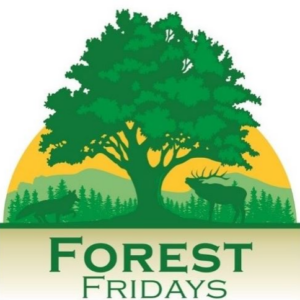by John Schwartzer
May 20th has been declared PA Native Species Day. This is a day to celebrate the natural diversity of species that make “Penn’s Woods” unique. What better way to celebrate native species than to permanently remove an invasive tree or shrub and replace it with a native species?
Invasive plants are a problem because they are not native to the area, reproduce quickly, spread rapidly, and crowd out native plants or cause other harm to human or environmental health. Our native plant species provide habitat for insects, birds, mammals, and all the species that rely on them further up the food chain. This is true in the big woods or the single tree in a residential lot.
The PA Invasive Replace-ive Program provides a chance to make a difference. Pennsylvania residents are encouraged to remove an invasive tree or shrub from their property or any property -with permission of course- and provide photo proof to receive their replacement seedling. Participants were encouraged to remove Tier 1 invasive species including callery pear, tree-of-heaven, princess tree, Norway maple, Japanese barberry, burning bush, and butterfly bush. Native replacement trees and shrubs were selected to provide residents with choices in size, growing conditions, edibility, and aesthetics. The inaugural events will provide roughly 1,300 trees to over 300 residents throughout the month of May. In addition to free replacement trees, events will also include planting demonstrations and opportunities for DCNR staff and partners to answer questions and assist with species selection. Event registrations filled faster than expected, and a waitlist was created to help guide future efforts to where there is the most need.
If you are interested in learning more about native or invasive plants, visit the DCNR Bureau of Forestry’s webpages:
If you’d like to purchase native plants, find a nursery offering native stock near you from the list:
The PA Invasive Replace-ive Program is made possible through a partnership with the PA Governor’s Invasive Species Council, the Department of Conservation and Natural Resources, the PA Department of Agriculture, the PA Sea Grant, the Penn State Extension Master Watershed Program, and the Western Pennsylvania Conservancy. Funding for this program is provided through a grant from the Forest Service, United States Department of Agriculture, an equal opportunity provider.
Post by Anthony Maenza for York Dispatch on 12 May 2025
The importance of reestablishing native species to combat invasive ones was the topic recently as Pennsylvania officials gathered in Cumberland County on Friday, May 9, to promote Pennsylvania Native Species Day later this month.
Leaders from the Pennsylvania Department of Conservation and Natural Resources, Department of Agriculture, Pennsylvania Game Commission and Pennsylvania Fish and Boat Commission were on hand to highlight how replacing invasive plants with native species helps restore habitat, protect wildlife and promote biodiversity.
Participants received native plants to support restoration efforts in their own landscapes. They encouraged local communities, organizations and residents to host their own events throughout May to raise awareness and celebrate the role native species play in sustaining ecosystems.
“Native species are vital to healthy ecosystems in Pennsylvania,” DCNR Secretary Cindy Adams Dunn stated. “When invasive plants take hold, they disrupt food chains and leave wildlife with fewer resources to survive. Through programs like Invasive Replace-ive, we’re not only removing harmful species — we’re rebuilding natural systems that support pollinators, wildlife, and people.”
There are 480 species of native birds and mammals that depend on native ecosystems to survive, Bureau of Wildlife Habitat Management Director Timothy R. Haydt stated.
“Invasive species disrupt these ecosystems statewide, highlighting the importance of working with agency partners and the public to ensure healthy native habitats for wildlife now and in the future,” Haydt stated.
“Invasive trees and shrubs take over farm fields, landscapes, and forests, choking out native species and harboring ticks and harmful pests like spotted lanternflies,” Strathmeyer stated.
Pennsylvania Fish and Boat Commission Executive Director Tim Schaeffer said native species are an essential part of life in Pennsylvania, including in aquatic ecosystems.
“These native fish, reptiles, amphibians, invertebrates, and plants bring our waters to life, and where managed and protected responsibly, provide incredible recreational value and sustenance,” Schaeffer stated. “Many of these delicate species are also nature’s best indicators of clean water, which is beneficial to everyone.”
Native Species Day is May 20, and the state officials suggested these ways to celebrate:
- Host or participate in a native species planting event.
- Organize or join a guided nature hike.
- Take part in an invasive species removal event.
- Attend a workshop or webinar on native species and ecosystem restoration.
- Plant native species in your yard.
To learn more about the Invasive Replace-ive Program, Native Species Day and how you can participate, visit the Governor’s Invasive Species Council at Pennsylvania Native Species Day | Commonwealth of Pennsylvania .
